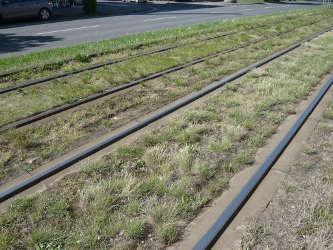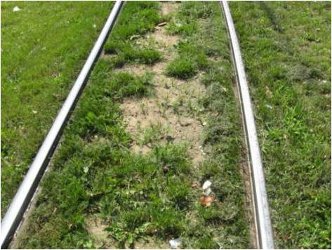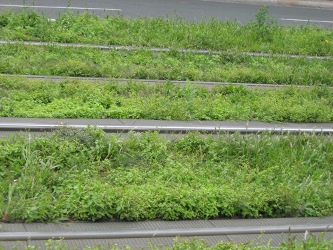Tests on Optimisation of Maintenance of Grass Tracks
Main reasons for inadequate maintenance are:
- Economies on maintenance for business management reasons
- Lack of knowledge and experience regarding the necessary ex-tent of maintenance for preservation of the targeted vegetation
- Missing knowledge of horticultural requirements of the greening system and the correlation of maintenance and preservation of a stable plant society
Consequences of no maintenance are:
- Succession (changing of plant society), like decline of targeted vegetation and increasing weed presence
- Thereby visual appearance changes, as for example jaggy appearance/thinning of plant coverage / tufts of grasses by tussock forming grasses up to drop out of vegetation

|

|

|
Increasing weed pressure due to low or unprofessional maintenance. Higher maintenance effort is needed to reestablish the targeted vegetation. (Photos Schade and IASP)
Therefore our project emphases were:
- Implementation of different maintenance measures in 3 track parts of a grass track in Berlin (intensive care, optimal care, normal care):
Development of new maintenance technology for the track by the network partner NIRA: curry comb tractor attachment to loosen dry lawn or mulch followed by vacuuming the dry plant parts - Variations of mowing frequency, cutting depth, amount of fertilizer; test with raking and scarifying;
- Adaption of maintenance measures to grass development stages
- Documentation of the grass development during 2 vegetation periods
- Comparison of life cycle costs of those 3 maintenance intensities and conclusion of optimal and economically justifiable maintenance
Preliminary results:
- A higher maintenance frequency temporarily fostered the density of the lawn.
- In the two test years several longer droughts occurred. Due to the limited thickness of the greening system in the test tracks, the temporarily low natural water supply had a greater influence on plant development than the maintenance intensity.

